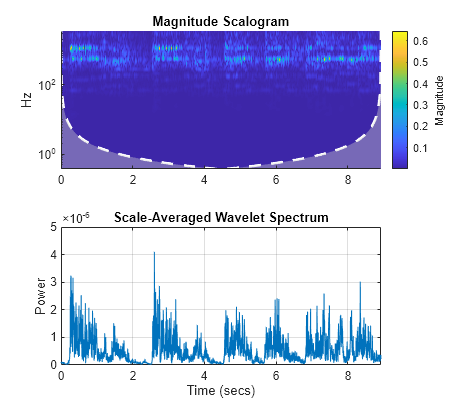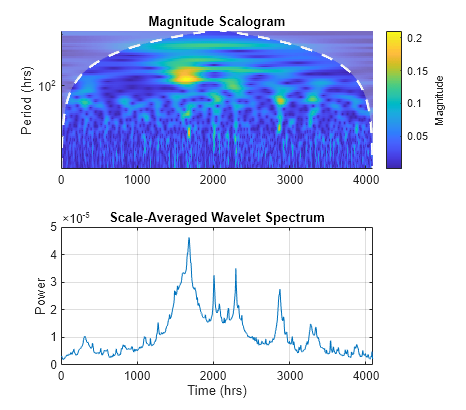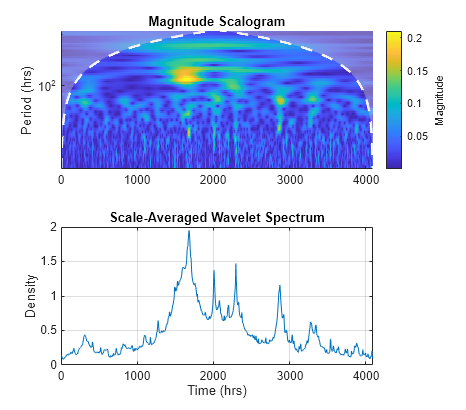scaleSpectrum
Scale-averaged wavelet spectrum
Syntax
Description
[
also returns the scale indices over which the scale-averaged wavelet spectrum is computed.
If you do not specify savgp,scidx] = scaleSpectrum(___)FrequencyLimits or
PeriodLimits, scidx is a vector from 1 to the
number of scales.
[___] = scaleSpectrum(___,
specifies additional options using name-value pair arguments. These arguments can be added
to any of the previous input syntaxes. For example,
Name,Value)'Normalization','none' specifies no normalization of the
scale-averaged wavelet spectrum.
scaleSpectrum(___) with no output arguments plots the
scale-averaged wavelet power spectrum in the current figure.
Examples
Input Arguments
Name-Value Arguments
Output Arguments
References
[1] Torrence, Christopher, and Gilbert P. Compo. “A Practical Guide to Wavelet Analysis.” Bulletin of the American Meteorological Society 79, no. 1 (January 1, 1998): 61–78. https://doi.org/10.1175/1520-0477(1998)079<0061:APGTWA>2.0.CO;2.
[2] Percival, Donald B., and Andrew T. Walden. Wavelet Methods for Time Series Analysis. Cambridge Series in Statistical and Probabilistic Mathematics. Cambridge ; New York: Cambridge University Press, 2000.
[3] Lilly, J.M., and S.C. Olhede. “Higher-Order Properties of Analytic Wavelets.” IEEE Transactions on Signal Processing 57, no. 1 (January 2009): 146–60. https://doi.org/10.1109/TSP.2008.2007607.
Extended Capabilities
Version History
Introduced in R2020b


